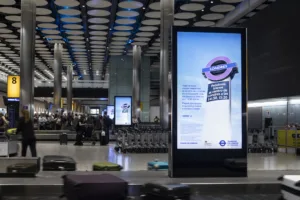by Jurriaan van Teunenbroek, Vice President Games and Content at Azerion
TV remains one of the most effective mediums for advertisers to reach consumers, despite how much our consumption habits have changed over the past few years. In fact, on average, people in the UK now spend more than five hours a day watching TV and video content. Nonetheless, just reaching consumers via TV and video is not enough to win them over, and brands should be looking to connect with people in a more fun and interactive way.
The world of gaming offers advertisers an avenue to combine their TV ads with something more engaging. With the current UK gaming ad spend sitting at £815 million, and predicted to grow to £1.84 billion by 2026, it would be a mistake for brands to not capitalise on the potential.
A game for everyone
In the UK, 60% of people aged 16 and over play games either via a console, desktop, or mobile device. Meanwhile, the average amount of time spent gaming online sits at seven-and-a-half hours per week.
Gaming has long left behind the idea of just being teenage boys in their bedrooms. The opportunity now exists to reach people of all ages, races, nationalities, and interests, and do so as an extension of their TV and video viewing habits.
While there can be huge benefits for brands crossing over from TV into gaming, it’s important to recognise that just shoehorning a brand into a game isn’t going to breed very much success for the business. Brands need to know where their audiences are and how best to engage with them in that environment without disrupting the user experience.
Feeling the metaverse love
One of the most effective ways of reaching audiences within gaming is through social, virtual events and experiences. The metaverse has been the talk of the town for a few years and is proving to be an effective avenue for brands to connect with engaged audiences.
Virtual worlds enable brands to provide consumers with the ability to purchase virtual products for their avatars, or take part in events such as live concerts without ever having to leave the comfort of their homes. What’s more, gamers will often share these virtual experiences via their social media profiles, offering brands the potential to expand their audience reach.
For example, ITV Studios has been teaming up with free-to-play virtual world Hotel Hideaway to provide Love Island fans with a range of experiences to supplement the ITV2 show.
The recently-ended winter edition of the show saw ITV launch a three-episode brand series on their World of Love Island Youtube channel, where three former islanders were interviewed while walking around the virtual Love Island villa in Hotel Hideaway.
This was a continuation of the success ITV had achieved with experiences in Hotel Hideaway during the summer edition of Love Island – when the dedicated branded hangout room replicating the villa was first launched.
In the first month of the room being open, ITV managed to sell 545,000 virtual items, including exclusive outfits, hairstyles, and themed profile backgrounds, all coming from three million visits to the branded replica villa. What’s more, the room averaged 46,000 daily visitors, and each person spent an average of 52 minutes in total within the experience.
Since then, ITV has also held three monthly World of Love Island quizzes within the virtual world, giving players the opportunity to test their knowledge of the show against others.
A powerful combination
ITV’s work with Hotel Hideaway is just one example of what’s possible when TV and gaming are combined to create the best possible experience for consumers, while finding ways for them to be regularly engaged with the brand.
Advertisers need to create content and products that are relevant to their gaming platform of choice, and help the brand stand out from the crowd, to achieve high engagement rates. Furthermore, improvements to measurement in gaming means that brands can more intelligently target the right audiences, and ensure their cross-channel campaigns are more efficient and effective.
To deliver what consumers are looking for, brands have to be willing to provide them with experiences outside of just a single channel. With a significant amount of people’s days taken up by consuming TV/video content and gaming, it’s fair to say those are two channels that can be combined to provide the sweet spot for not just brands, but for consumers too.








